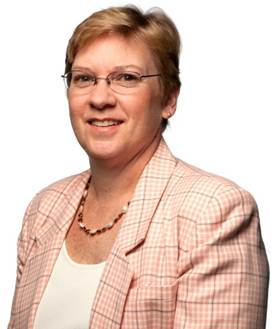AARP Hearing Center
Across the States: Profiles of Long-Term Services and Supports
By Wendy Fox-Grage, Ari Houser, Kathleen Ujvari, September 5, 2018 10:00 AM
A major demographic shift is happening. The ages 85+ population is projected to triple between 2015 and 2050. In comparison, the population younger than age 65 will increase by only 12 percent.
The growth of the 85+ age group is projected to significantly outpace all other groups once baby boomers begin turning age 85 in 2031, marking the beginning of boomer-driven 85+ population growth for the following two decades.
That has significant implications. The 85+ cohort is the most likely to need help with everyday tasks such as bathing, dressing, eating, transferring, and toileting. It is because of these demographics and the need for and cost of long-term services and supports (LTSS) that the AARP Public Policy Institute released the newest edition of Across the States: Profiles of Long-Term Services and Supports.
This reference book compiles data and analysis on LTSS for each state, combining thousands of data points from a large variety of sources—including some original analysis not found elsewhere—into a single volume. We have been publishing Across the States for 24 years to help policymakers, administrators, and stakeholders make informed decisions about LTSS public policies and programs.

Following are some of the key trends and dynamics illuminated in Across the States.
Family caregiver pool. The aging demographic trend, displayed in the above graph, will have a profound impact on family caregiving. In 2015, there were 7 people ages 45–64 (the peak caregiver age group) for each person age 80 and older (the peak care need age group). While not all people ages 80+ have access to 7 potential caregivers ages 45–64, this is a useful metric for the overall availability of caregivers to provide family care to older people. In 2030, it is estimated that the “family caregiver support ratio” will drop to 4 to 1. Projections then show it falling to about 3 to 1 in 2050, when all baby boomers will be ages 85 or older.
Diversity of LTSS recipients. The older population is becoming more diverse. In particular, the Hispanic population ages 65+ is projected to quadruple between 2015 and 2050. This growing diversity of the older population will impact how LTSS are provided in terms of meeting diverse personal and family caregiver preferences, arranging for language translation services, providing services with cultural sensitivity, and training health care providers in cultural competence.
Cost challenges. Even today, the cost of LTSS is not within reach of most families across all the states. The annual median cost for nursing facilities ($97,455 for a private room) is more than double the median income of older households ($42,113). This high cost of care can all too often cause people to exhaust their savings, causing them to resort to Medicaid, the largest public payer for LTSS. While private long-term care insurance is designed to ease these costs, the vast majority (95 percent) of adults ages 40+ do not have this type of insurance for various reasons, including affordability, insurers leaving this business, and consumer confusion about the need for LTSS coverage.
Need for more home- and community-based services (HCBS). Generally people prefer to live at home and in the community. Yet the system favors more costly nursing facility care for older adults and people with physical disabilities. Overall, HCBS—including funding for home-delivered and congregate meals as well as the supply of home care workers and residential care options—are not keeping pace. Even though Medicaid spending is becoming balanced toward more HCBS, the level of balance varies dramatically among states and populations. While 40 states became more balanced between 2011 and 2016, 11 states grew less balanced for older adults and people with physical disabilities.
We look forward to bringing you more blog posts based on revealing Across the States data and insights. To read the full report and to access each state’s data profile, go to: http://www.aarp.org/acrossthestates.

Wendy Fox-Grage has provided policy research, analysis, and guidance for the AARP Public Policy Institute since 2004. Her areas of focus are state long-term services and supports reforms, Medicaid managed long-term services and supports, and home- and community-based services.

Ari Houser has been part of the AARP Public Policy Institute since 2004. His work focuses on trends in demographics, disability, family caregiving, and the use of formal services.

Kathleen Ujvari is a senior strategic policy advisor with the AARP Public Policy Institute. Her work includes research and analysis of state-level and national data on long-term services and supports to identify issues, trends, and opportunities to improve access, delivery, quality, and program funding.































































